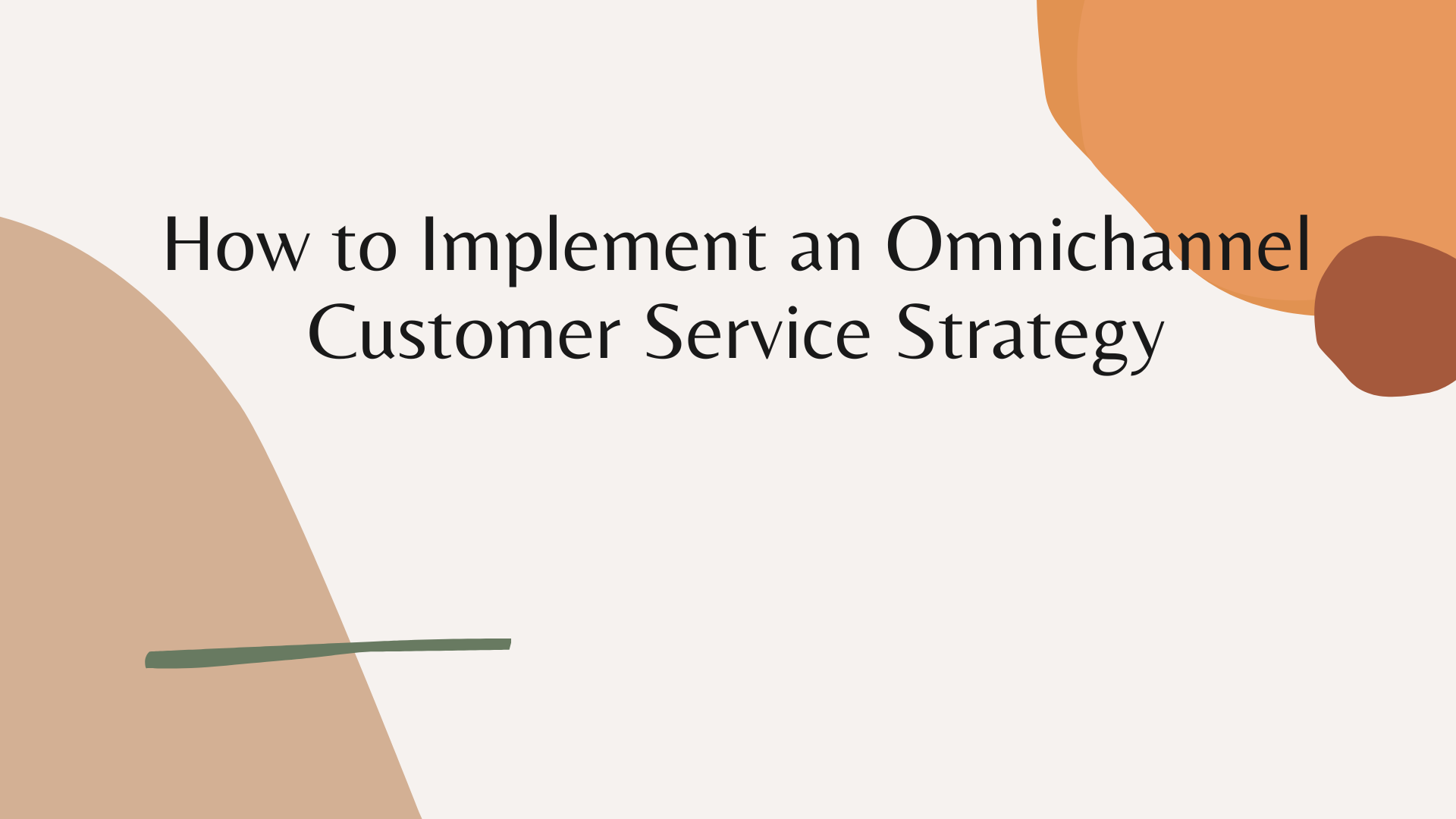Delivering exceptional customer service across multiple channels has become imperative in today’s competitive business landscape. An effective way to achieve this is by implementing an omnichannel customer service strategy. In this comprehensive guide, we will explore the steps to successfully implement an omnichannel approach, ensuring consistent and seamless customer experiences. From understanding the concept of omnichannel to mapping customer journeys and leveraging technology, this article will provide you with the insights and strategies needed to excel in customer service.
Understanding the Concept of Omnichannel
To successfully implement an omnichannel customer service strategy, it’s essential to understand the concept and its key components. This section will explain the difference between multichannel and omnichannel approaches, emphasizing the importance of integration and consistency across various customer touchpoints.
Analyzing Customer Journey and Touchpoints
In order to provide a seamless customer experience, it’s crucial to analyze the customer journey and identify the key touchpoints where customers interact with your business. This section will guide you through the process of mapping customer journeys, identifying pain points, and determining opportunities for delivering personalized and relevant experiences.
Creating a Unified Customer Experience Strategy
Building a unified customer experience strategy is vital for successful omnichannel implementation. This section will explore strategies for aligning marketing, sales, and customer service departments to create a cohesive and customer-centric approach. It will also cover the importance of consistent branding, messaging, and tone across all channels.
Leveraging Technology and Tools
Technology plays a crucial role in implementing an omnichannel customer service strategy. This section will discuss the key technologies and tools available, such as customer relationship management (CRM) systems, communication platforms, and analytics tools. It will provide insights on how to integrate these tools to streamline customer interactions and gather valuable data for personalization and optimization.
Training and Empowering Customer Service Teams
Successful implementation of an omnichannel strategy relies on well-trained and empowered customer service teams. This section will provide tips on training agents to handle omnichannel interactions, focusing on effective communication, problem-solving skills, and empathy. It will also emphasize the importance of providing agents with the right tools and resources to deliver exceptional customer experiences.
Monitoring, Measuring, and Continuous Improvement
Implementing an omnichannel customer service strategy is an ongoing process that requires monitoring, measuring, and continuous improvement. This section will discuss key performance indicators (KPIs) to track, such as response time, customer satisfaction, and channel effectiveness. It will also provide insights on how to gather feedback, analyze data, and make data-driven decisions for optimizing the omnichannel experience.
Recommended reading: How to Build an Effective Customer Experience Strategy: Key Steps for Success
Frequently Asked Questions
1. How do you implement an omnichannel strategy?
Implementing an omnichannel strategy involves several key steps:
1. Define your customer journey:
Understand your customers’ behavior and preferences across different channels and touchpoints. Identify the key interactions and touchpoints where customers expect a seamless experience.
2. Integrate your channels:
Establish a cohesive infrastructure that allows different channels (such as websites, mobile apps, social media, email, phone, and physical stores) to communicate and share data effectively. This integration ensures a consistent customer experience across channels.
3. Centralize customer data:
Create a unified view of customer data by integrating information from various channels and touchpoints. This allows you to have a holistic understanding of each customer and deliver personalized experiences.
4. Enable cross-channel communication:
Implement technologies that enable customers to start interactions on one channel and continue seamlessly on another. For example, a customer can initiate a conversation on social media and then switch to live chat or phone without having to repeat information.
5. Train and align your team:
Provide comprehensive training to your employees on the omnichannel strategy and ensure they understand the importance of delivering a consistent experience. Align all customer-facing teams, such as sales, marketing, and customer service, to work together towards the common goal of providing a seamless omnichannel experience.
6. Continuously analyze and optimize:
Monitor customer interactions, collect feedback, and analyze data to identify areas for improvement. Use insights gained to refine your omnichannel strategy and enhance the customer experience over time.
2. How do I set up omnichannel for customer service?
To set up an omnichannel for customer service, follow these steps:
1. Map customer touchpoints:
Identify the various touchpoints where customers interact with your business, such as phone, email, live chat, social media, and in-store visits.
2. Integrate communication channels:
Implement a customer service platform or software that allows you to consolidate customer inquiries from different channels into a single interface. This integration enables agents to access and respond to customer queries from a centralized platform.
3. Enable seamless transitions:
Ensure that customers can switch between channels without losing context or having to repeat information. For example, if a customer initiates a conversation on live chat, they should be able to continue the conversation via phone or email without starting from scratch.
4. Implement a knowledge base:
Create a comprehensive knowledge base that includes frequently asked questions, troubleshooting guides, and product information. This resource can be accessible across channels, empowering customers to find answers on their own.
5. Train customer service agents:
Provide training to your customer service team on handling interactions across different channels. Agents should be well-versed in using the customer service platform, have a deep understanding of your products/services, and possess strong communication skills.
6. Monitor and measure performance:
Utilize analytics tools to track customer service performance metrics, such as response time, resolution rate, and customer satisfaction. Regularly review these metrics to identify areas for improvement and make data-driven decisions.
3. What is an omnichannel customer service strategy?
An omnichannel customer service strategy focuses on providing a seamless and consistent customer experience across multiple channels and touchpoints. It involves integrating various communication channels, such as phone, email, live chat, social media, and in-person interactions, to ensure customers can interact with a business using their preferred method.
The key principle of an omnichannel customer service strategy is to enable customers to switch between channels without any disruption in their experience. For example, a customer might start an inquiry on social media, continue the conversation on live chat, and complete the resolution via phone, all while maintaining context and receiving consistent support.
By implementing an omnichannel customer service strategy, businesses aim to improve customer satisfaction, increase loyalty, and enhance the overall customer experience. It
allows customers to interact with a company seamlessly, regardless of the channel they choose, resulting in more personalized and convenient service.
4. What is an example of omnichannel customer service?
An example of omnichannel customer service is when a retail company provides a cohesive experience across its online store, mobile app, and physical stores. Here’s how it might work:
1. Online store:
Customers can browse and purchase products through the company’s website, which offers detailed product descriptions, reviews, and personalized recommendations based on their browsing history. If customers have any questions, they can access a live chat feature or submit an inquiry via an online form.
2. Mobile app:
The company’s mobile app allows customers to easily access their accounts, track orders, and receive personalized notifications. It also includes a live chat feature and the option to call customer support directly from the app.
3. Physical stores:
When customers visit a physical store, their online shopping history and preferences are accessible to store associates. This enables the associates to provide personalized recommendations and a tailored shopping experience. Customers can also choose to receive receipts and offer via email for future reference.
In this example, the retail company ensures a seamless experience across multiple channels. Customers can start their shopping journey on one channel, such as the online store, and effortlessly transition to another, like the mobile app or physical store, without losing any information or encountering inconsistencies. The integration of these channels enhances convenience, personalization, and overall customer satisfaction.
Recommended reading: How AI-powered Chatbots are the Future in Customer Service
Conclusion
Implementing an omnichannel customer service strategy is essential for businesses that aim to provide a seamless and consistent customer experience across multiple channels. By understanding the concept, analyzing customer journeys, leveraging
technology, empowering teams, and continuously monitoring and improving, you can create a customer-centric approach that sets your business apart. Embrace the power of omnichannel and elevate your customer service to new heights of success.





